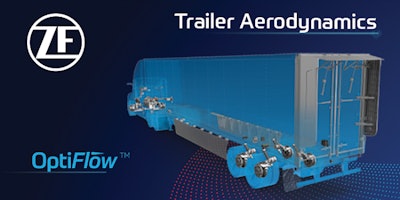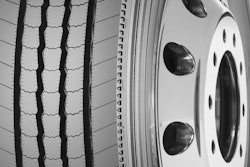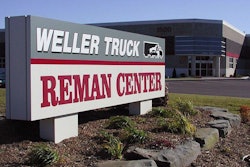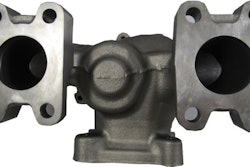
Expansion is a fundamental tenet of profitable parts distribution. Succeed in a product line, add another one. Dominate a local market, expanded outward.
While increased market maturity and competition has made the latter harder, expansion through product proliferation has always existed as lever parts operations could pull to generate new business opportunities.
And it’s a lever that won’t go away if propulsion methods change.
Despite eye-catching headlines from the federal government and private sector about how electric vehicles could require fewer components and less maintenance, vendors across the trucking space say their product offerings continue to grow.
The electrification of trucking will be a multi-decade process, if it occurs at all, and industry suppliers say in the meantime there’s little reason for distributors to fear a reduction in the part numbers they stock. Part numbers are retired each year, vendors say, but new lines are added at a much higher rate.
Additionally, thanks to increased technical innovation and complexity across equipment, recent years have offered a dramatic boom in the sheer number SKUs parts warehouses could stock.
Distributors who continue to evolve their inventory with the industry’s vehicle population should continue to see new product line opportunities.
[RELATED: How Navistar's 'Digital Dealer' could revolutionize service operations]
“I think over the past 10 years there’s been significant growth in the numbers introduced to the marketplace,” says Dave Schultz, director of aftermarket business development at Bendix Commercial Vehicle Systems.
Safety has been a huge boom for Bendix, he says.
“We are a technology company, so we’ve been developing and implementing new products on new trucks for safety, such as collision mitigation systems, air disc brakes,” says Schultz. “That’s caused us to release more and more parts into the market.”
Phillips has done the same.
“With innovation being at the forefront of our business, we maintain a good balance of both introducing new technologies, as well as improving the features and benefits of existing products,” says CEO Rob Phillips.
Across its five brands, ZF has more than 70,000 active SKUs, which Head of Commercial Vehicle Aftermarket North America Steve Bashir says makes the company the largest single-source provider to the commercial vehicle aftermarket.
Bashir says ZF’s brands also are expanding their safety-related part numbers, but adds new SKUs doesn’t always mean new lines. Suppliers are improving and enhancing existing product lines as well.
“We continually enhance standard parts to improve performance, and at the same time we are introducing new, innovative design technologies to support both conventional and next generation mobility,” he says. “As parts offerings evolve, there isn't necessarily a clear dividing line between new and old technology.”
 Hendrickson's new ROADMAAX Z rear air suspension was introduced in March, one of many new products the company has introduced for the truck and trailer industry in recent years.Hendrickson International
Hendrickson's new ROADMAAX Z rear air suspension was introduced in March, one of many new products the company has introduced for the truck and trailer industry in recent years.Hendrickson International
Hendrickson Director of Aftermarket David McCleave agrees. Adding new part numbers skew toward new technologies but don’t make up the entirety of industry introductions, he says.
Cummins-Meritor’s Jason Soika, general manager of sales, North American aftermarket, says, “roughly 70% of our new parts released in 2023 were generated through product introductions.”
Adds McCleave, “As time progresses, you always find ways to VAVE (value add, value engineer — improve) your product line,” he says. “New designs or material that will reduce costs, reduce weight or improve on a targeted system characteristic. This will create new part numbers that replace others, thus improving existing product lines.”
The suppliers say these instances further expand the aftermarket, as improved components must earn market share before legacy SKUs are retired. Other factors impact eliminating a SKU as well; sunsetting a part number is not a simple action.
Vendors supplying components for new truck and trailer production are often contractually obligated to maintain those SKUs in the aftermarket for a period of time (ranging from 15 to 25 years in most cases) after their production run ends.
[RELATED: Knowing your customers key to keeping sales on the table]
McCleave says when a part ages out of first-fit production “is the first gate where we will ratchet down the production volumes.” From there, Hendrickson monitors production and raw material requirements, aftermarket demand and more to determine next steps.
 ZF's OptiFlow trailer aerodynamics products were introduced last fall, further expanding the company's already gigantic product offering.ZF
ZF's OptiFlow trailer aerodynamics products were introduced last fall, further expanding the company's already gigantic product offering.ZF
Bashir says ZF does the same, and notes the process toward discontinuing a part number often begins several years before it finally is eliminated. Similar processes are found at other vendors.
“Phillips has a process of evaluating our product portfolio that focuses on both the internal benefit of product obsolescence, as well as the impact it has on customers,” says Phillips. “We want to ensure there is buy-in across the enterprise on what products we may elect to remove from our portfolio.”
Aftermarket buy-in matters too. Replacement numbers must gain a foothold of their predecessors’ demand before production plans change. New and improved components come with obvious benefits but often also carry higher prices. Customer acceptance of new parts is a vital step in the removal of older versions.
[RELATED: Freightliner's Cascadia is the most popular truck on the road. What's No. 2?]
Schultz says Bendix uses technical bulletins, service data documentation, in-person and virtual messaging to alert customers to new and expanded product lines. When a new component is replacing or improving upon an existing part, he says its vital distributors and end users understand why the new product should be specified moving forward.
“That’s constantly happening,” he says. “We put out those notifications as frequently as we have to.”
And reducing and finally shuttering production only happens when a vendor is ensured an old line is no longer viable. As Soika puts it, “When new technology and customer adoption of that technology offsets declining sales [of existing lines], or when the competitive intensity drives the margin to unsustainable levels.”
Suppliers reference braking components as a category where product numbers are in flux but total part numbers are not. Air disc brake components are growing in product availability and customer adoption, adding numbers across the spectrum. Conversely, drum brake production rates continue to fall, though suppliers say the elimination of drum brakes from the aftermarket is still many years away.
“There are still so many” in the population, says McCleave. Schultz agrees, noting “drums could be around another 50 years.”
For distributors worried the drum market or another category key to their business will evaporate faster, suppliers reiterate the importance of keeping up with new technologies.
“With the advancement of products coming into the marketplace, there are always going to be new opportunities,” says Schultz. “Educate your team on these products and how they will sell them, because the demand will be out there.”
And any distributor that fails to do so shouldn’t blame their vendor when a legacy, low-volume part is finally discontinued — though McCleave is optimistic that won’t be a problem.
“Heavy-duty aftermarket distributors are not afraid to evolve. That is why they are so resilient, and we have companies that are over 100 years old,” he says. “When one door closes, another door opens. Change is never immediate, and it brings opportunities, and many of those opportunities aren’t even uncovered yet.”
“Fleets and end users will always have problems they need solved,” adds Phillips. “Our commitment to relationships and problem solving through innovation is the backbone of Phillips Industries and defines our nearly 100-year history. We are an operational example of just how technology can grow business within the commercial vehicle industry.”
[RELATED: Where did a recent Phillips innovation rank on our 2023 top products countdown?]
And even if electric trucks or vehicle technology in the distant future actually do create a minor reduction in part numbers, that doesn’t mean the aftermarket will waste away.
“Trucks and trailers will still need to stop, will still need a suspension, air systems, lights, bumpers, etc.,” says McCleave. “The powertrain will look different in the future, but it still is made of components.”
“As far as volume, we don’t necessarily expect a decline, but what we can expect is that shops will perform different types of repairs and maintenance,” adds Bashir. “For example, we anticipate more predictive value modes that will come from using diagnostic software. Service providers will have the ability to repair more frequently before a catastrophic event were to happen.”
Cummins-Meritor has a similar outlook, and Soika recommends aftermarket operations prepare for that future while they still can. “Invest in your business to ensure that [your] service capabilities address the technology and embrace the equipment,” he says.










